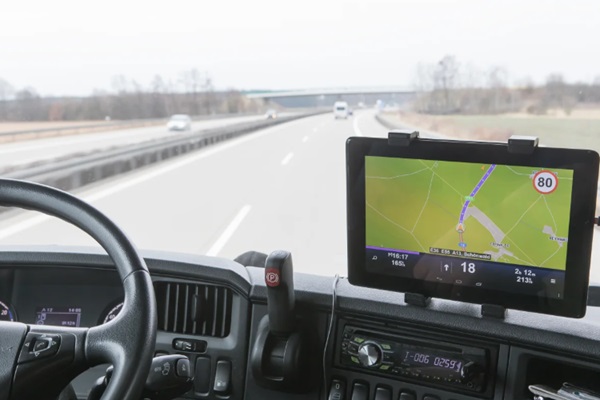
By Andrew Tavener
December 13, 2023
In today’s fast-paced world, all businesses transporting goods must understand the importance of efficient fleet operations with modern route planning and telematics solutions. Route planning technologies decipher the optimal routes, providing valuable data to enhance operational efficiency and reduce costs. However, implementing route planning software and telematics in your fleet management strategy is only half the battle.
To receive the greatest from these tools, you must ensure your drivers are on-board and fully understand how to operate the system. This blog post will explore strategies to get your drivers on-board with route planning software like the solutions from Descartes and telematics, making the integration process smoother and more effective.
Understanding the Driver’s Perspective
Before delving into strategies to get your drivers on-board with route planning software and telematics, it’s crucial to understand and sympathize with their perspective. Implementing change can be met with significant resistance, as drivers may be apprehensive about adopting new technologies, and heavily looming declining job security, driven by concerns that advancing technology may either replace their roles entirely or diminish their job relevance.
 The common concerns of drivers include the complexity of learning and adapting to new software and telematics devices, which can be particularly daunting, especially for those less acquainted with technology. In addition, privacy becomes a paramount concern as drivers worry about the monitoring and potential misuse of their personal data.
The common concerns of drivers include the complexity of learning and adapting to new software and telematics devices, which can be particularly daunting, especially for those less acquainted with technology. In addition, privacy becomes a paramount concern as drivers worry about the monitoring and potential misuse of their personal data.
Additionally, implementing new tools may disrupt established workflows, possibly causing short-term inefficiencies. This disruption is exacerbated by inadequate training and support, leaving drivers ill-prepared to embrace these technological advancements. Thus, addressing these concerns and demonstrating how route planning software and telematics can benefit drivers and the organization is essential.
Clear Communication
Effective communication is the cornerstone of gaining driver buy-in for route planning software and telematics. It starts with clearly explaining the reasons behind the implementation and its benefits. The implementor should highlight how these technologies can make their jobs easier and more efficient, ultimately improving their work-life balance.
It’s crucial to involve drivers in the decision-making process, seeking their input and addressing their concerns. A two-way dialogue can help you better understand the employee’s needs and tailor the implementation to meet them, subsequently reducing resistance.
Ensure Software is User-friendly
 The level of user-friendliness is critical in determining the level of driver adoption. Hence, employers should choose route planning software and telematics solutions that are intuitive and easy to use and should consider conducting usability testing with a small group of drivers before full implementation to identify and address any usability issues.
The level of user-friendliness is critical in determining the level of driver adoption. Hence, employers should choose route planning software and telematics solutions that are intuitive and easy to use and should consider conducting usability testing with a small group of drivers before full implementation to identify and address any usability issues.
Additionally, providing user-friendly guides or resources that drivers can reference if they encounter difficulties using the software or devices will enhance adoption satisfaction.
Comprehensive Training
One of the most common reasons for resistance to new technologies is a lack of understanding. Employers must ensure that all drivers receive comprehensive training on how to use route planning software and telematics effectively. This training should cover the basic functionalities, troubleshooting, and best practices. In addition, the employer should consider providing ongoing training and support to address any questions or issues that may arise, helping to prevent further resistance. A knowledgeable and confident workforce will likely embrace the technologies and ask for assistance.
Explain the Benefits
Drivers are more likely to support route planning software and telematics if they can see the direct benefits to their work. The employer should consider highlighting how these technologies can:
- Reduce time spent on the road: Efficient route planning leads to shorter driving times and less fatigue.
- Improve safety: Telematics can monitor driving behavior and provide feedback to help drivers become safer on the road.
- Reduce administrative tasks: Automation can minimize paperwork and administrative burdens.
- Enhance job security: Emphasize that these technologies are tools to support drivers, not replace them.
Address Privacy Concerns
Driver privacy is a valid concern, and it must be addressed transparently. Employers should assure drivers that any data collected will be used solely for improving operational efficiency and safety. Implementing clear policies regarding data privacy and adhering to all relevant regulations can help drivers feel more at ease with the changes and reduce backlash.
Employers should also allow drivers to access and control their own data when possible, as this transparency and accountability will help build trust in the employer-employee relationship.
Incentives and Recognition
Consider implementing incentive programs or recognition methods to motivate drivers to embrace route planning software and telematics. Recognizing and celebrating drivers who excel in using these technologies can help increase acceptance and uptake amongst other  drivers, as peer recognition is a powerful motivator within the driver community.
drivers, as peer recognition is a powerful motivator within the driver community.
Employers could consider offering rewards for achieving specific performance metrics, such as improved fuel efficiency, reduced idle time, or adherence to planned routes.
Continuous Improvement
After implementation, employers should regularly seek feedback from drivers about their experiences with route planning software and then use this feedback to make continuous improvements and refinements to the system. Involving drivers in this process will make them feel valued and heard, helping prevent any future resistance.
Conclusion
Getting your drivers on-board with route planning software and telematics is crucial for the success of your fleet management strategy. By addressing employee concerns, providing comprehensive training, showcasing the benefits, ensuring user-friendliness, and offering incentives, you can create a positive environment for adopting these technologies. Successful implementation is ongoing; thus, maintaining open communication with your drivers will be essential to long-term success. With employee support, organizations can unlock the full potential of route planning software and telematics to optimize fleet performance and reduce costs.
About the author
Andrew Tavener
 Andrew is a logistics marketing expert with over twenty years of senior business-to-business marketing management experience of technology products and services across a broad range of industry sectors that includes logistics, transport, public sector, retail, field service, utilities, IT and telecoms.
Andrew is a logistics marketing expert with over twenty years of senior business-to-business marketing management experience of technology products and services across a broad range of industry sectors that includes logistics, transport, public sector, retail, field service, utilities, IT and telecoms.




